After-Hours Tour of the Fraunces Tavern Museum: "Path to Liberty"
Explore a new exhibit inside the oldest building in Manhattan, a witness to history throughout the Revolutionary War Era!


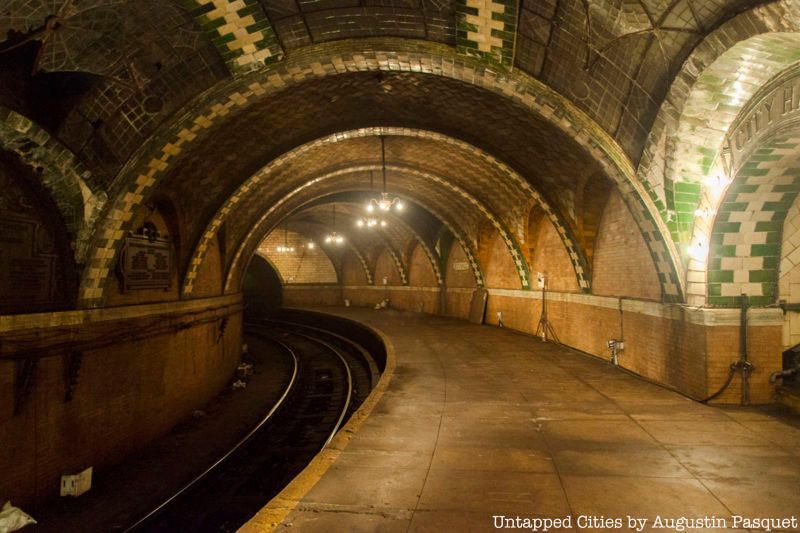
New York City’s abandoned City Hall subway station is one of the city’s most mythical places – accessible but barely so. It’s so beautiful, New Yorkers can hardly imagine a time when so much attention could be lavished on our transit system. And in some ways, it’s hidden in plain sight. Read on for the secrets of the old City Hall subway station:
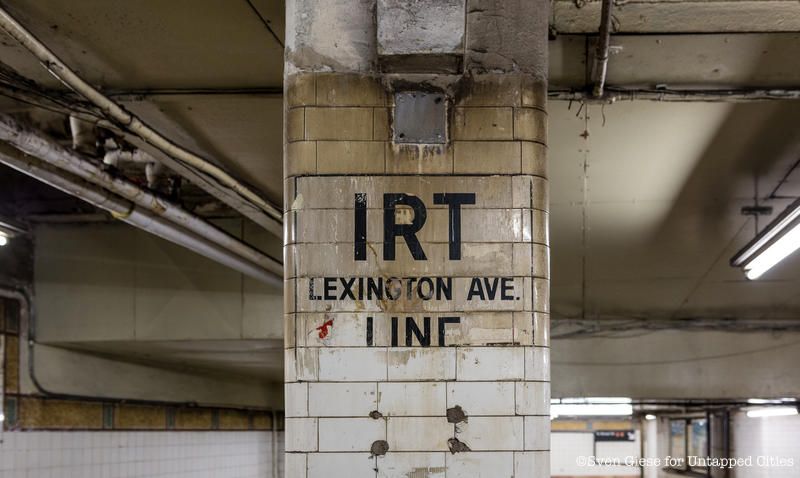
The Interborough Rapid Transit system (IRT), New York City’s first underground line opened on October 27, 1904 to great fanfare. The City Hall subway station was the southern terminus of the IRT line which ran to 145th Street. Designed as the “crown jewel” of the new transit system, the station reflects the values of the City Beautiful architectural movement – that beautiful architecture could engender a better civic society. It was also a time when New York City’s elite were trying to prove that the city of industrialists and businessmen could compete culturally on the same level as those in Europe.
The City Hall subway station was built in the same spirit as Central Park and Carnegie Hall – public amenities spurred by the private interest of the city’s wealthiest. At the Museum of the City of New York, you can find many artifacts related to the early days of the subway including the commemorative Tiffany and Co. shovel used by Mayor Robert Van Wyck to break ground on the IRT subway line and the first subway tickets.
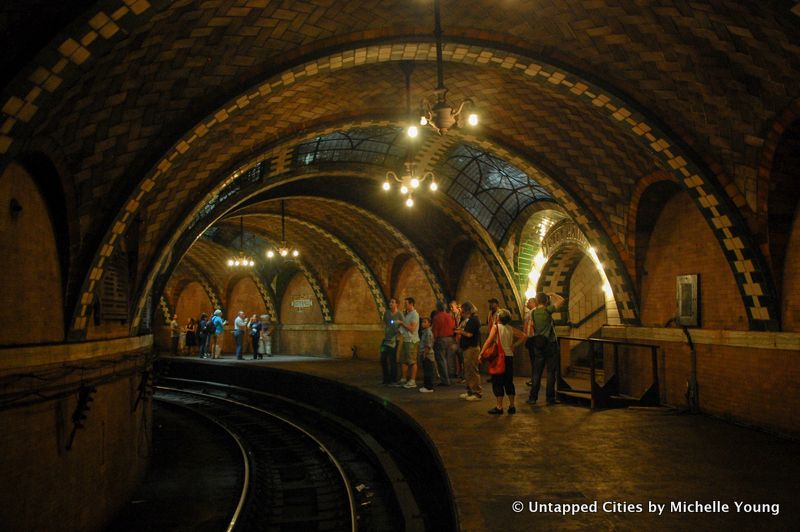
The main consulting architects on the IRT stations were George Lewis Heins and Christopher Grant LaFarge, who handled everything from the fare control stations above ground, to the layout of the subway stations and the tiles on the walls. The City Hall subway station is particularly unique because of the involvement of R. Guastavino & Co., who were responsible for the curved skylights and the vaulted tiling so characteristic of many of New York City’s grandest places including Grand Central Terminal, Ellis Island, and Manhattan’s Municipal Building.
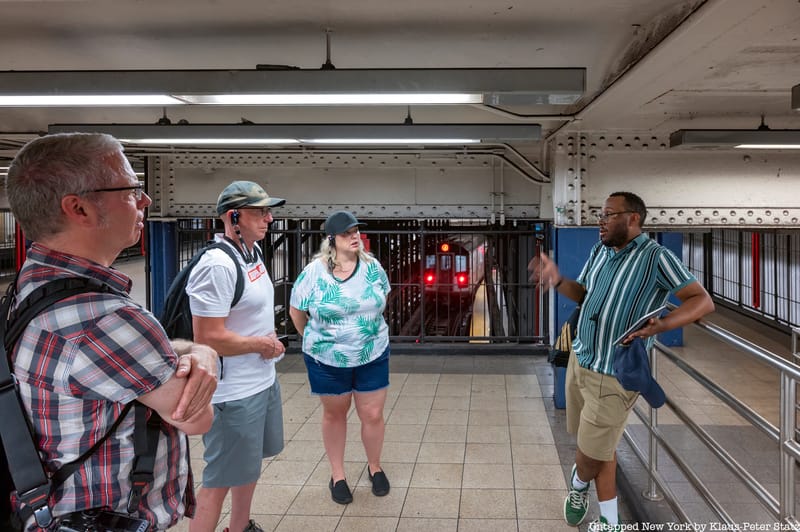
Ride through the oldest stations, uncover hidden art, and more!
Unlike the generally simpler tiling scheme in the rest of the IRT subway system, City Hall was clearly intended to impress. Fifteen tiled arches support the ceiling along with three panels of glass skylights. Rich tones of red brick, and green and cream tiles contrast with the blue glass in the skylights, resulting in a stunning visual and architectural feat.
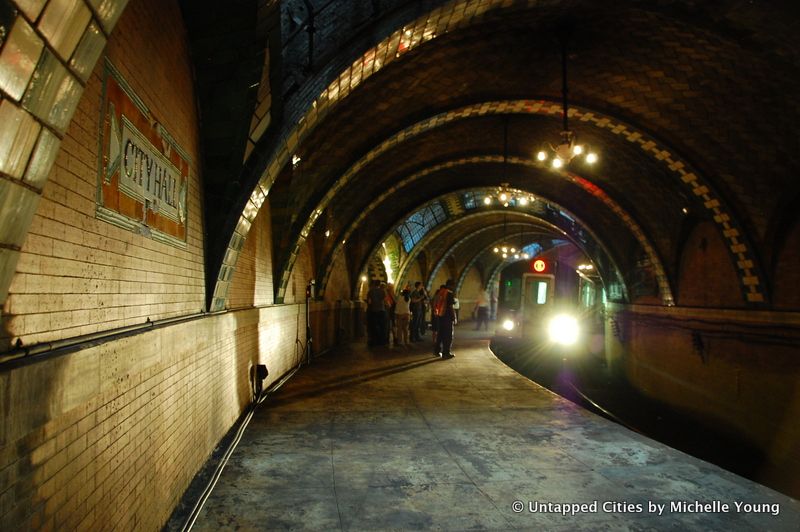
The City Hall Subway station is located just 600 feet south of the current Brooklyn Bridge/City Hall station where the 4/5/6 and J/M/Z trains operate. The station is 400 feet long along a curve without any straight lines of sight. The original City Hall subway station was closed in 1945 on New Year’s Eve. Original subway cars only had doors at the ends of the car, not in the center. Because the gap between the center doors and the platform at City Hall would have been too wide, center doors were kept closed when at the station. Newer IRT cars however lacked the feature which would keep only the center doors closed.
The curved shape of the station’s platform, its close proximity to other nearby stations, and the fact that it is on a loop that would be difficult to extend, were all factors in the station’s decommissioning. Today, the station is used as a turnaround for the 6 trains after they terminate at the Brooklyn Bridge stop. Though perhaps the most famous, City Hall is just one of many subway stations that have been abandoned over the system’s more than one hundred years in operation.
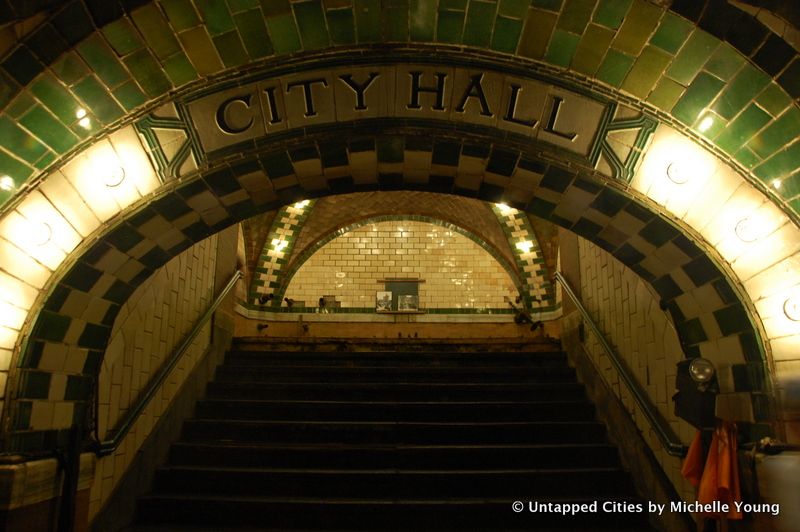
When you get to the mezzanine level inside the station, there is one arched exit that’s now closed off. This once opened into a tunnel that would take transit goers tunnels that led to the basement of the Woolworth Building, one of the amenities offered to prospective office renters. The bike room of the Woolworth Building today is where the subway access tunnels began.
According to Woolworth Building tour guides, the former doors once led to a passageway under Broadway that connected to all three subway lines, the BMT, IND, and IRT. The BMT stop that the tunnel led to is now the City Hall R stop. The doorway in the Woolworth basement that led to this tunnel is now covered. The only remaining door still visible once led to the IRT line station that is still across the street, Park Place. At Park Place subway station, you could once see the now locked gate where the original tunnel was. That passageway was completely filled in under Broadway and no longer exists.
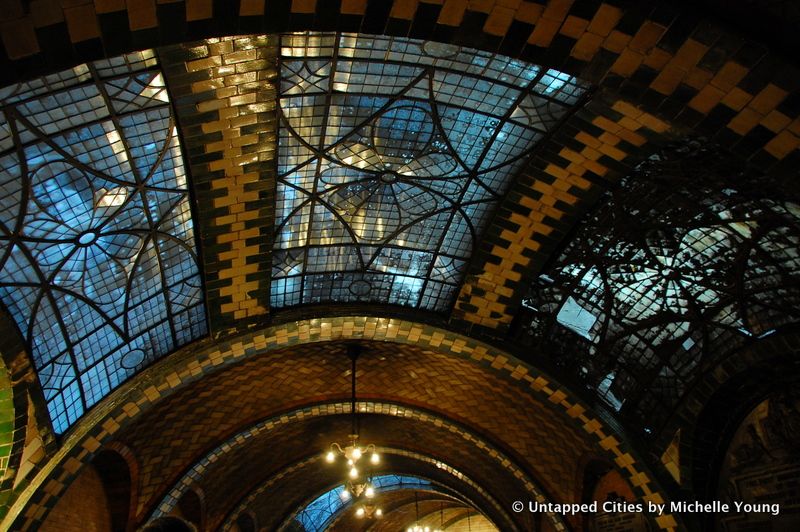
As a safety measure, the skylights of many structures in New York City were tarred over during World War II including the original Pennsylvania Station, the Ansonia Hotel, and more. The City Hall Subway Station, though underground, was no exception.
Today, some pieces of the skylights are missing while others still show remnants of the tarring. Despite this, you can still get a sense of how stunning the glasswork is. No part of this station has a lack of detail.
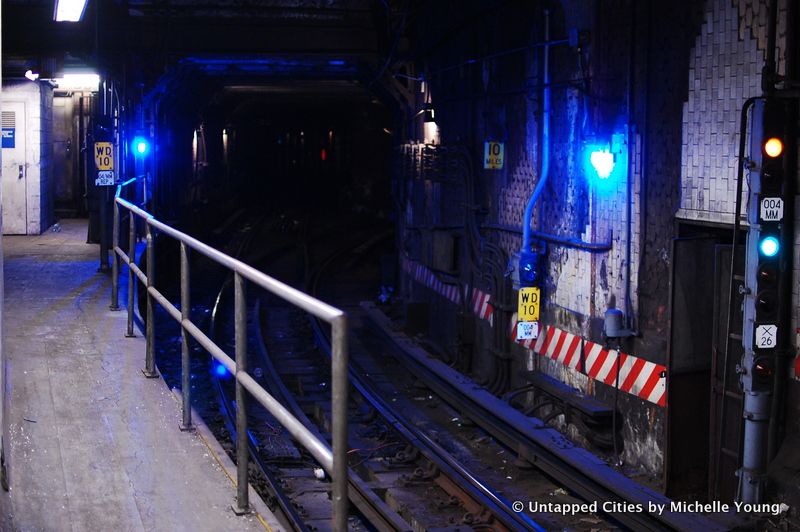
The official way to visit the old City Hall subway station is to join the New York Transit Museum and get on the tours they usually run there twice a year. The Museum is unfortunately not offering tours at this time. When the tours do run, tickets usually sell out in about an hour so you need to be on top of your game.
Alternatively, the unofficial way to see the station is to stay on the 6 train and ride through the turnaround as the train shifts from downtown to uptown. If the lights are on in the station, you’re in for quite a treat.
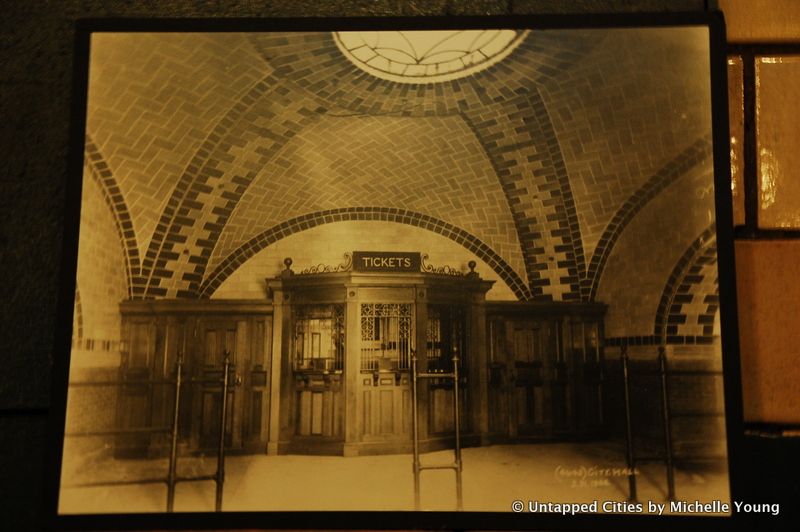
A mezzanine area above the platform once showcased an ornamented oak ticket booth which no longer exists. The mezzanine also features a vaulted ceiling crowned by a leaded glass skylight. Today, the space looks like this:
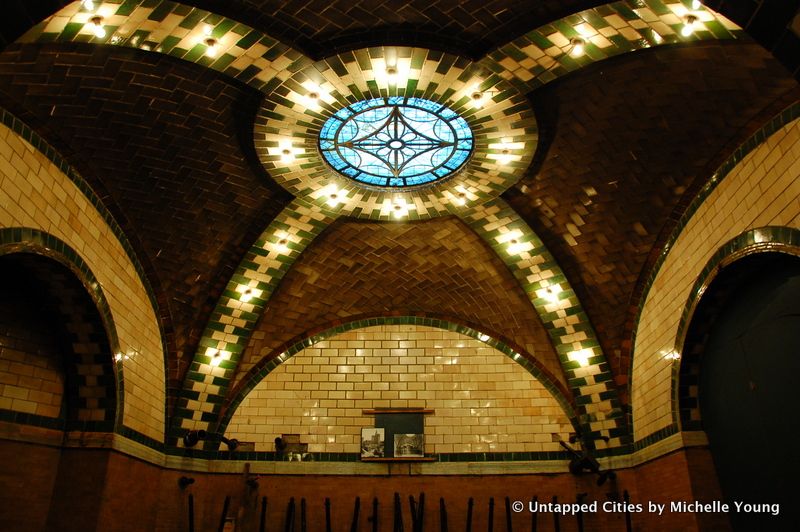
There are many places in the subway where ticket booths once stood, and you can see the remnants of some. One station where you can see remnants of a lost booth is the Times Square/42nd Street subway station., another station that opened in 1904. You can also see a secret door to the Knickerbocker Hotel, original railings, remnants of the first ticket booth and turnstiles, and exposed infrastructure from the original tracks.
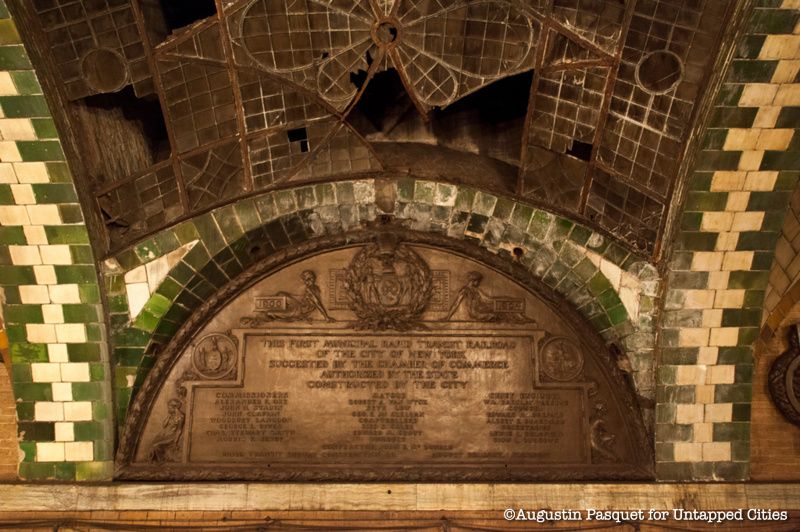
Three commemorative plaques are placed in arched openings in the subway station, on the track-side wall opposite the platform. They name the directors and engineers of the Rapid Transit Subway Construction Co., founded by August Belmont to fund the IRT. The plaques also acknowledge the staff of the chief engineer.
When the station was closed, these plaques were removed. They found a temporary home in the Brooklyn Bridge station. The plaques hung near a subway token booth at Brooklyn Bridge station until 1995 when they were placed back in their original setting.
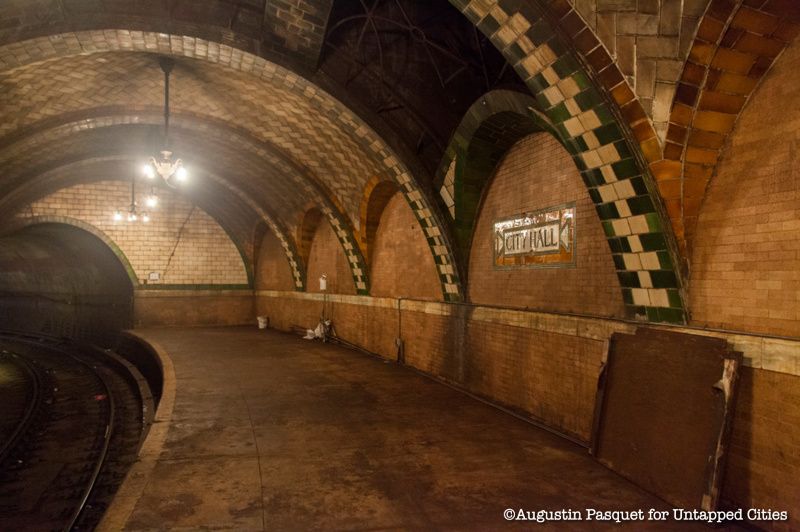
In the episode “Nautilus” in Season 4 of the CBS television show Person of Interest, a station that looked similar to the City Hall subway station appeared as the headquarters of the team. The green and white tiling was similar but the vaulting was lower (more akin to the Oyster Bar) and the tiled subway sign said IRT instead of “City Hall.”
Yet, it was so accurate in detailing from the time period we reached out to the Museum of the City of New York, which was running the exhibit “Palaces for the People: Guastavino and the Art of Structural Tile,” at the time. The museum confirmed it was a “faux-Guastavino,” and this article details the construction of a station inspired by City Hall on a 4,000 square foot set. Watch the episode here – the station appears in the last four minutes.
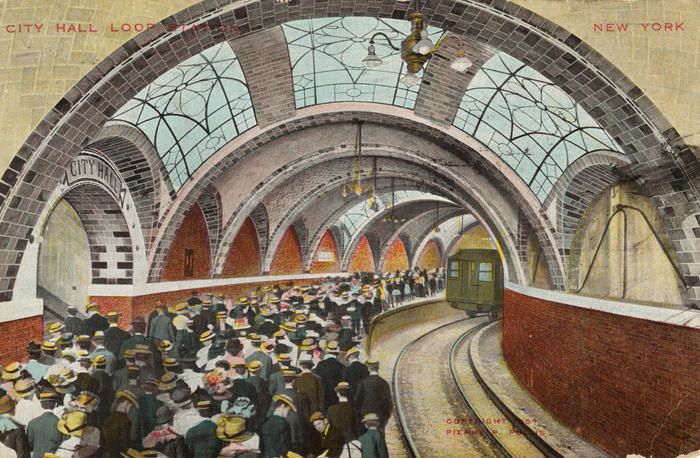
Earlier in 1904 there were inspection tours of the New York City subway conducted on wooden cars. In 1904, Mayor McClellan took an inspection tour in one of those wooden cars with contractor John B. McDonald. Other New York City officials also rode the wooden cars for preview tours.
Join us on our underground NYC subway tour where we’ll explore the past, present, and future of the NYC subway. While Untapped New York’s tour does not stop inside the City Hall subway station, we will explore many hidden gems of the subway system and ride through abandoned stations.
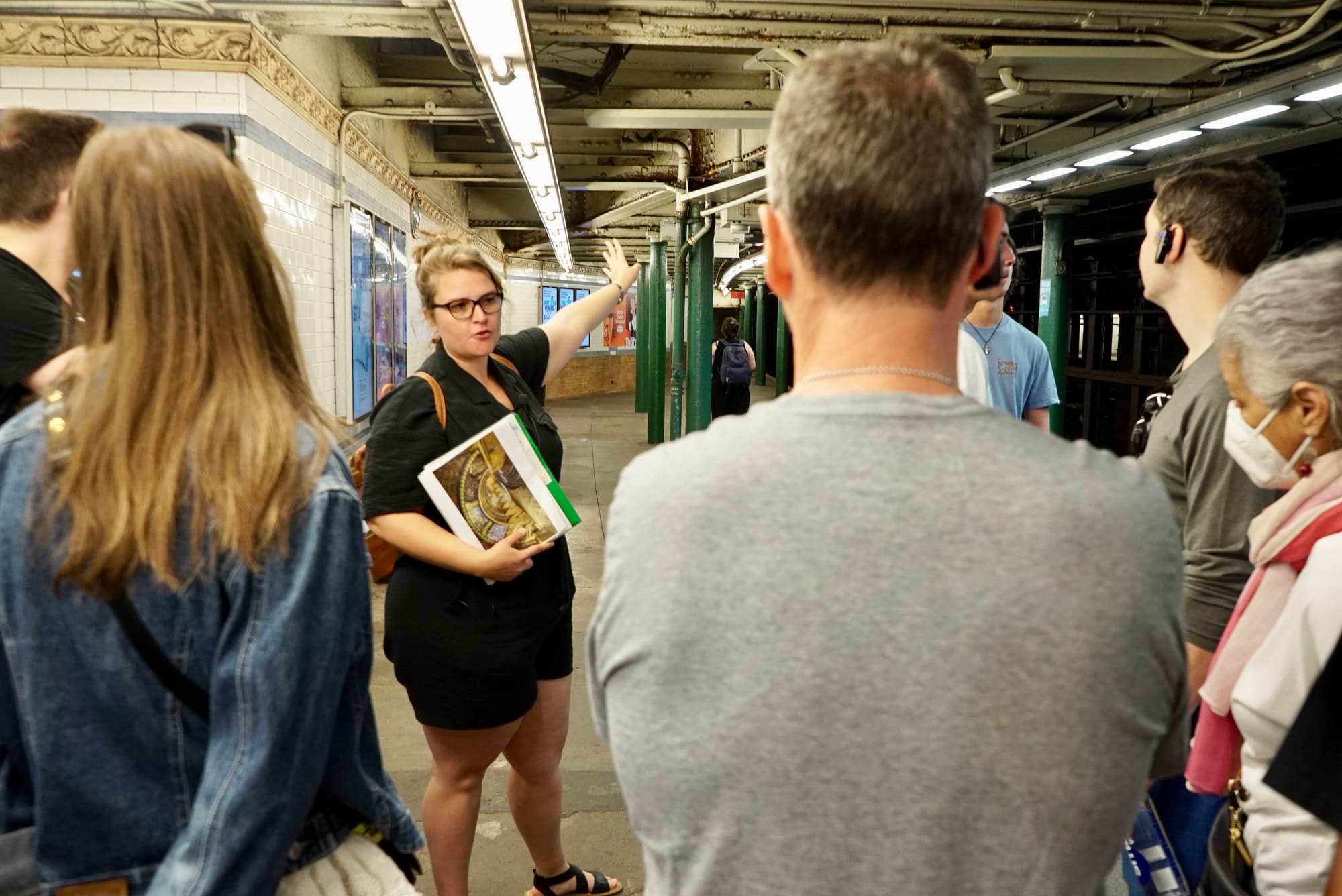
Ride through the oldest stations, uncover hidden art, and more!
Next, check out 12 Lost Subway and Rail Lines and 20 Secrets of the NYC Subway
Subscribe to our newsletter